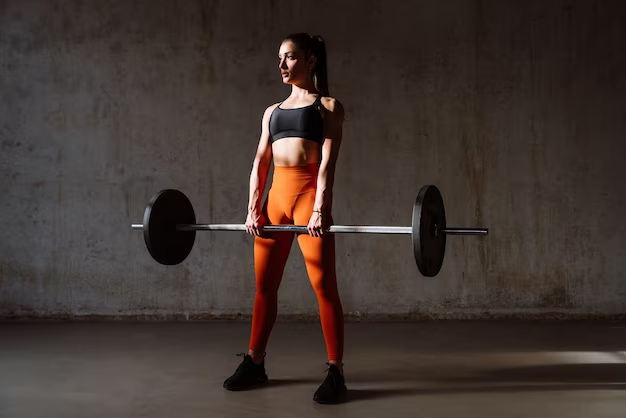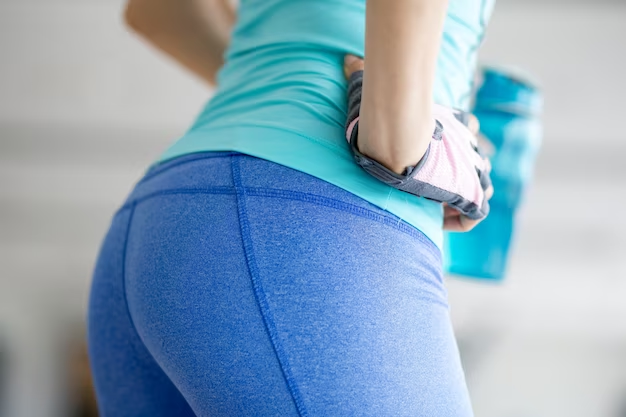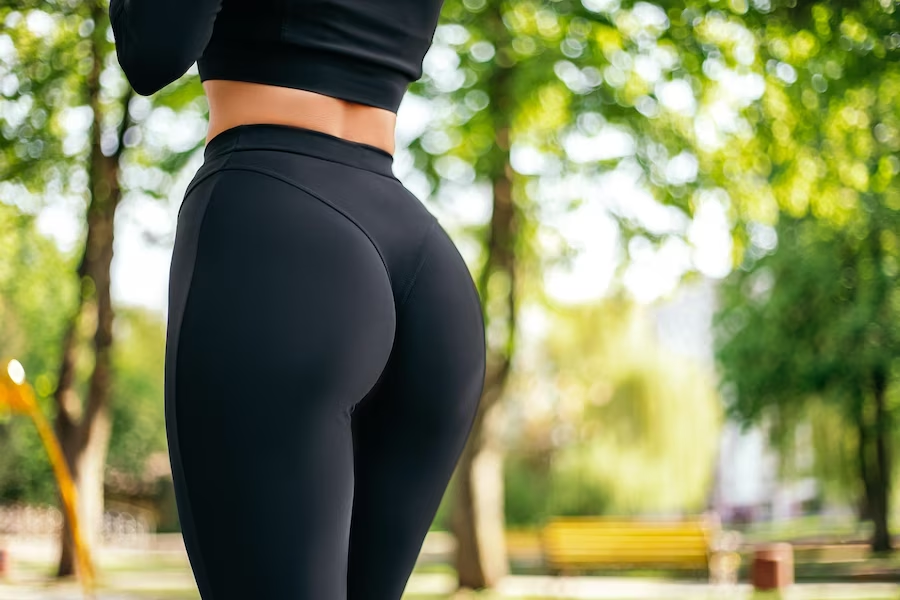In the fascinating realm of physical strength and stability, the role of an evolved and artistically shaped posterior cannot be overstated. It’s your gluteal muscles – comprising the intricate trio of the gluteus maximus, medius, and minimus – that take command of vital movements like hip extension, thigh abduction, and torso rotation. Yearning for a forceful and robustly chiseled backside? Focusing on the glutes, those masterful muscles, may just be your answer. Dive into this exploration, for here unfolds the mystique and methods to integrate lower glute exercises into your regular training regimen. Unravel the hows and whys, and seize the opportunity to magnify their unparalleled benefits.
Benefits of Strong Lower Glutes
There are practical and aesthetic gains to be had from developing robust gluteal muscles. Among the many benefits are:
- Enhanced Athletic Performance: Running, jumping, and lifting all benefit from strong lower glutes because of the added power and explosiveness they provide;
- Reduced Risk of Injuries: Lower back problems, knee injuries, and other common lower body disorders can be avoided with the support of a strong glute complex, which helps stabilize the pelvis and knees;
- Improved Posture: Keeping your glutes actively engaged and strong might help you keep your spine in its optimal alignment;
- Increased Caloric Expenditure: Working the glutes increases the amount of calories burned during exercise, which may be helpful for those trying to maintain a healthy weight;
- Firmer and Toned Appearance: Confidence can be boosted by strengthening the glute muscles, which can result in perceptibly tighter and more toned buttocks.
Let’s get down to business and talk about the best workouts for your lower glutes to assist you get in shape.
Lower Glute Exercises
Exercise 1: Bridges
| Steps |
|---|
| 1. Start by spreading your feet and knees apart around hip-width and reclining on your back. |
| 2. Maintain a straight line from your shoulders to your knees by driving through your heels and squeezing your glutes to lift your hips. |
| 3. After a brief pause with the hips lifted, return to the starting position by lowering them. |
| 4. Focus on good technique and keeping your glutes engaged throughout the exercise and do as many repetitions as you’d like. |
Bridges are an excellent starting point for anyone looking to improve their glute strength. By using your hip extensors, they force you to activate your largest gluteal muscle (the gluteus maximus). This step gets you ready for the more complex ones that will come later.
Exercise 2: Hip Thrusts
| Steps |
|---|
| 1. Have a seat on the floor with your back supported by a bench or some other sturdy object. |
| 2. Put something heavy, like a barbell, over your hips and make sure it stays put. |
| 3. Drive up through your heels to create an upward motion in your hips and a vertical line from your shoulders to your knees. |
| 4. At the height of the exercise, squeeze your glutes, and then slowly return your hips to the beginning position. |
| 5. Focus on keeping control and activating your glutes throughout the exercise and repeat for the desired amount of repetitions. |
When it comes to strengthening and toning your posterior chain, there is no better workout than the hip thrust. Using a barbell or other weighted object to increase the difficulty of the exercise and target the glutes more effectively can provide remarkable results.
Exercise 3: Single-Leg Glute Bridges
| Steps |
|---|
| 1. To begin, get on your back with your knees bent and feet flat on the floor, hip-width apart. |
| 2. Raise one foot off the floor and put it out in front of you, straight. |
| 3. Maintaining a straight line from your shoulder to your knee, you should press through the heel of the grounded leg to raise your hips off the floor. |
| 4. At the peak of the motion, squeeze your glutes and hold for a few seconds. |
| 5. Slowly and deliberately return your hips to the floor. |
| 6. Lift the second leg off the ground and do a glute bridge to repeat the exercise on the other side. |
| 7. Repeat this process, alternating legs for as many sets as you like or as part of your normal glute machine workout. |
Single-leg glute bridges are the next logical step if you’re ready to challenge yourself. By focusing on one side at a time, this exercise improves balance and strength. It’s also useful for correcting any lopsidedness in your gluteal muscles.
Exercise 4: Romanian Deadlifts

| Steps |
|---|
| 1. Position the barbell or dumbbells in front of you and stand with your feet shoulder-width apart. |
| 2. Place your hands shoulder-width apart and use an overhand grip to lift the barbell or dumbbells. |
| 3. Keeping your back flat and your knees slightly bent, inge at the hips and lower the weights to the floor. |
| 4. Always keep the bar or weights within close range of your body. |
| 5. To get back up on your feet, tighten your glutes and drive forward with your heels. |
| 6. At the peak of the motion, stand up straight while actively contracting your glutes and abs. |
| 7. Focus on good form and keeping your glutes engaged throughout the whole range of motion as you do the exercise for the required number of repetitions. |
Romanian deadlifts are excellent for working out not only the hamstrings and lower back, but also the glutes. Extending your hips can help you strengthen and tone your glutes more specifically.
Exercise 5: Reverse Lunges
| Steps |
|---|
| 1. Put your feet together and stand up straight. |
| 2. Bend both knees to 90 degrees and take a backward step with one foot. Both knees should be at about the same level, with the front knee exactly over the ankle and the back knee hovering slightly off the ground. |
| 3. Return to a standing position by driving through the front foot’s heel. |
| 4. Step back with one foot, then the other, alternating between legs. |
| 5. Maintain an upright posture and a strong core throughout the activity. |
| 6. Aim for control and steadiness as you perform the reverse lunge for the specified number of reps on each leg. |
| 7. This workout tests your balance and stability while strengthening your glutes, hamstrings, and quads. |
You may strengthen your quadriceps and your core stability by doing reverse lunges, which also work your glutes. The step-back motion works your glutes and strengthens your lower body’s stabilizing muscles.
Exercise 6: Curtsy Lunges
| Steps |
|---|
| 1. Keep your feet hip-width apart and your body erect. |
| 2. Cross your legs in a curtsey position by stepping diagonally behind with one foot. |
| 3. Make two right angles with your knees, the front knee being immediately above the ankle. |
| 4. Return to a standing position by driving through the front foot’s heel. |
| 5. Step diagonally behind the other foot and repeat the motion with the second leg. |
| 6. Maintain an upright posture and a strong core throughout the activity. |
| 7. Curtsy lunges should be performed for the required number of reps on each leg with an emphasis on correct form and deliberate control throughout. |
| 8. The curtsy lunge is an effective exercise for toning and strengthening the glutes, quads, and inner thighs. |
Curtsy lunges will definitely work up a sweat! Compared to regular lunges, this variation will put your glutes through their paces. The gluteus medius and minimus are activated when you take a diagonal step back, which also works the sides of your glutes for a complete exercise.
Exercise 7: Side-Lying Clamshells
| Steps |
|---|
| 1. Stack your legs and lie on your side with your knees bent at a ninety degree angle. |
| 2. Always keep your feet together as you go. |
| 3. Stabilize yourself by contracting your abs. |
| 4. Raise the top leg while maintaining a flat foot position. Try to get it as high as you can hold it comfortably. |
| 5. Carefully return to the starting posture by lowering the top knee. |
| 6. Keep doing leg lifts on the same side until you reach your goal rep count. |
| 7. You should now switch legs and do the workout again. |
Isolating the gluteus medius, a minor muscle in the glute complex responsible for hip abduction, with side-lying clamshells is a great way to work that muscle. Runners and other athletes, in particular, should focus on building this muscle’s strength to enhance stability and reduce the risk of injury.
Workout Routine

Here is an example of a training program that targets the gluteus minimus. Injury can be avoided by remembering to warm up first and then cool down after each workout.
| Exercise | Sets x Reps | Rest |
|---|---|---|
| Bridges | 4×15 | 60 sec |
| Hip Thrusts | 4×12 | 60 sec |
| Romanian Deadlifts | 3×10 | 60 sec |
| Single-Leg Glute Bridges | 3×12 each leg | 45 sec |
| Reverse Lunges | 3×10 each leg | 45 sec |
| Side-Lying Clamshells | 3×15 each side | 45 sec |
| Curtsy Lunges | 3×10 each leg | 45 sec |
Conclusion
Functional mobility, athletic performance, and general fitness all rely on strong, toned lower glutes, so it’s important to work on building those. Improve your posterior chain strength and see your glutes pop with a practice that includes a wide range of lower glute exercises. If you want to see benefits from your workouts, you need to get started right, progressively ramp up the intensity, and stay the course. The time to start benefiting from your glutes’ strength is now.
FAQ
At least twice weekly, you should incorporate lower glute exercises into your program. Resting between workouts is essential for muscle growth and repair.
Many workouts targeting the glutes below the hips can be done without any special tools. Bridges, single-leg glute bridges, and bodyweight lunges are all excellent choices for at-home workouts because they just require the use of your body weight.
Lower glute workouts can help with firming and toning, but they won’t get rid of cellulite completely. Cellulite can sometimes be mitigated by maintaining a healthy weight, engaging in regular exercise, and drinking enough of water.
The time it takes to observe significant changes depends on a number of variables, including the person’s starting point, nutrition, and exercise regularity, among others. Some people report seeing results after just a few weeks of consistent exercise and healthy eating.
